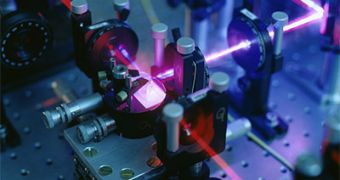We could say that code breakers saved a lot of lives during World War II by cracking the code of the German military Enigma machine. However, with the arrival of the personal computer and the invention of the Internet, code breaking became mostly a headache as it is mostly used by malevolent individuals in order to steal information. Quantum cryptography promises to solve most of these problems by creating an information encoding process that is practically impossible in this universe.
Nonetheless, there are still many physical aspects that must be worked out before quantum cryptography escapes the theoretical realm and joins reality. Currently, powerful encryption keys such as the 128-bit RSA can be easily broken and overpowered through simple programming techniques. Basically, one can say that no encryption code, no matter how powerful, is secure in the world of code breakers.
Quantum cryptography presents a very simple solution. An encrypted piece of information is transmitted through the network to a receiver. Unless the person at the other end has the correct encryption key used by the sender, they will be unable to decrypt the data. Any attempt to decrypt the information without the correct key would ultimately fail and result in the destruction of the message, thus alerting both the sender and the receiver of a possible intrusion of an unauthorized person.
The encryption technique relies on the random nature of quantum mechanics. Heisenberg's Uncertainty Principle clearly states that measuring the quantum state of a quantum system would determine that state to change.
Quantum key distribution was first used to encrypt information during the Swiss general election last year on the electronic voting system in Geneva to ensure a secure poll. The project was monitored by the Development of a Global Network for Secure Communication based on Quantum Cryptography, or SECOQC for short, a European Union funded effort to develop a quantum key distribution encryption system.
During this project, SECOQC researchers proved that point-to-point communication using the quantum key distribution is viable.
"We want to establish a network wide quantum encryption, because it will mean it works over much longer distances. Network quantum encryption and quantum key distribution mean that many parties can communicate securely, not just two. Finally, it also means quantum encryption could be deployed on a very large scale, for the insurance and banking sectors, for example", says Christian Monyk, SECOQC project coordinator and leader of the quantum technologies unit at the Austrian Research Center.
"The quantum science for cryptography and key distribution is essentially solved, and it is a great result. But getting that system to work across a network is much more difficult. You have to deal with different protocols and network architectures, develop new nodes and new interfaces with quantum devices to get it to a large-scale, long distance, real-world application", Monyk says.
The biggest problem is getting the system to work on long distances due to the need of hi-fidelity data transmission, which is currently plagued by fiber optics dispersion. "It was not one big problem, it was many, many small computing science and engineering problems. We had to work with a large number of technologies. And we have to certify it to experts", says Monyk.
The technology will be once again demonstrated this year in October in Vienna and will probably be ready for practical application in one or two years.

 14 DAY TRIAL //
14 DAY TRIAL //